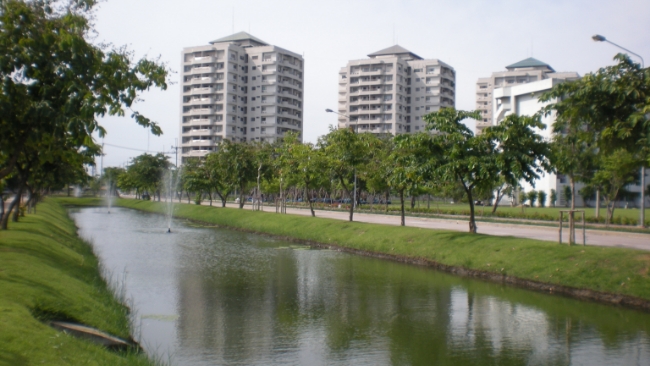Wetland
The fact that the wetland of Mahidol University, Salaya was characterized by low plains and
originally rice fields and water lily ponds. At present, within the Salaya area, there are still two
original natural wetland features remaining: the northern area of the Institute for Population and
Social Research; and the southern part of the Sireeruckhachati Nature Learning Park. There is an
area that is flooded in the rainy season and dry in the dry season, alternating with the natural
seasonal cycle, diverse ecosystem of the wetland, with large trees and shrubs densely covering it.
Many types of aquatic plants can be seen within the swamps and wet marshes area.
Apart from natural wetlands, Mahidol University is surrounded by freshly developed wetlands for drainage, flood prevention and wastewater treatment. Furthermore, traditional preservation and emphasis on upgrading and conserving are incorporated into the design and construction. As a result, it serves as a habitat for both plant and animal species.
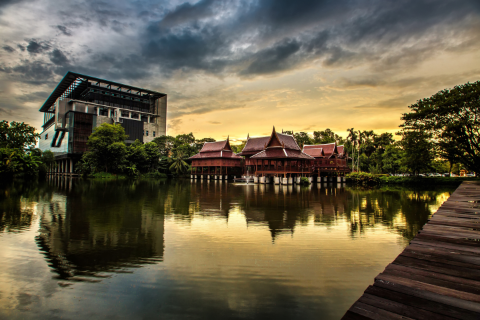
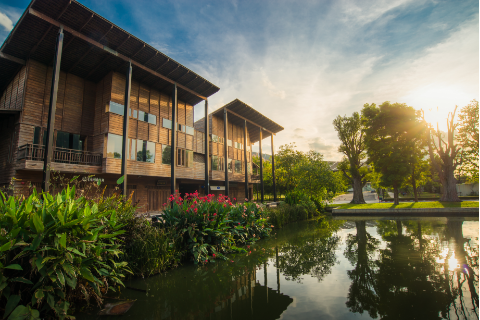
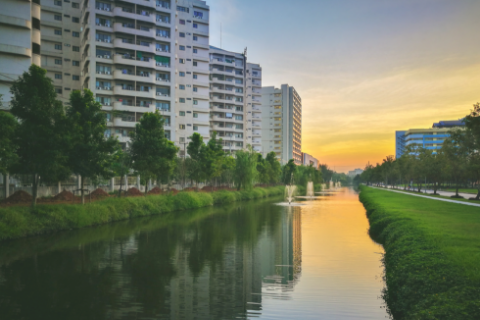
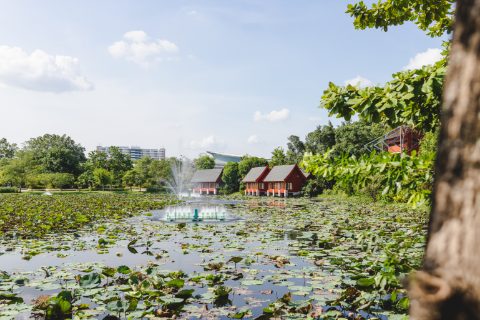
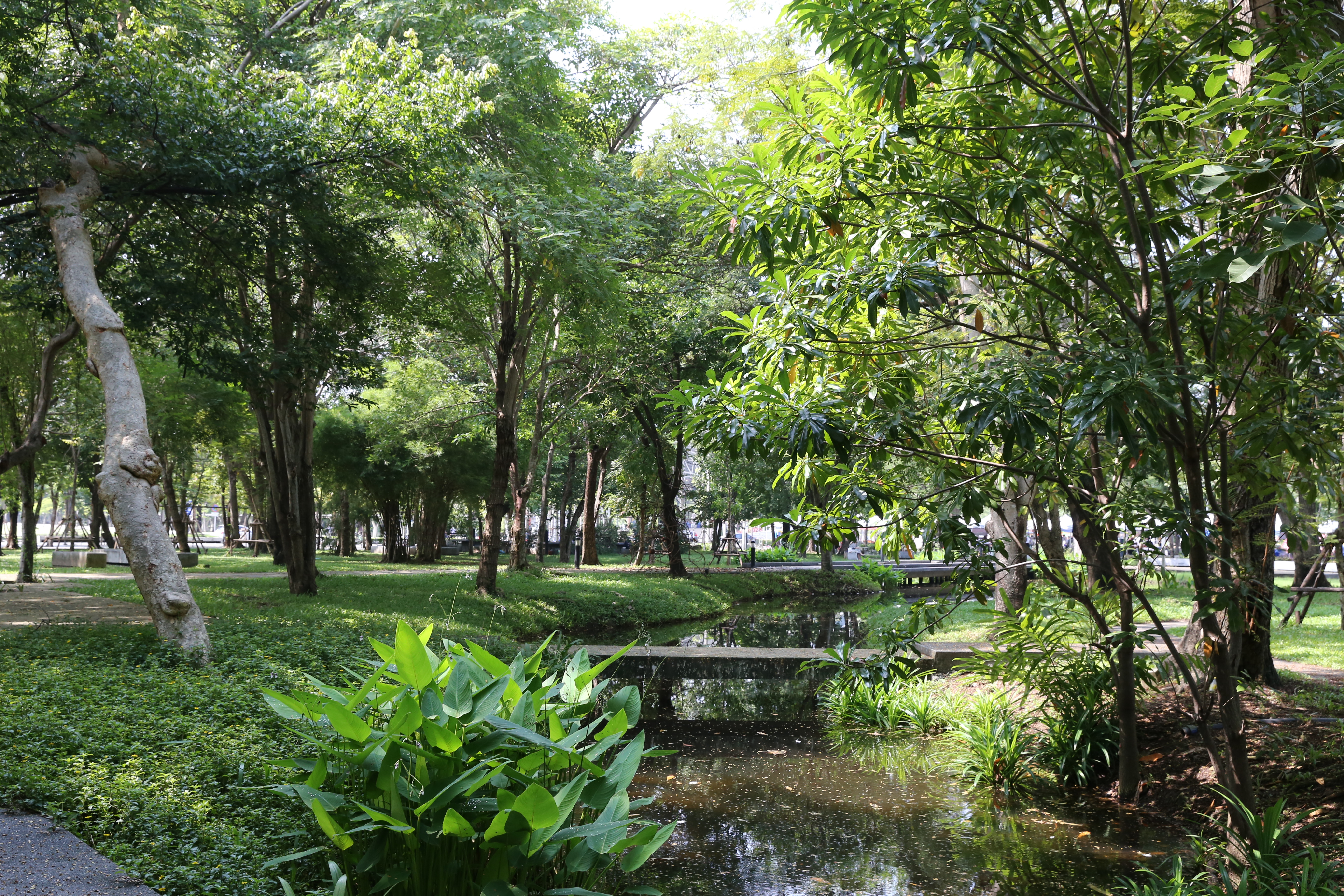
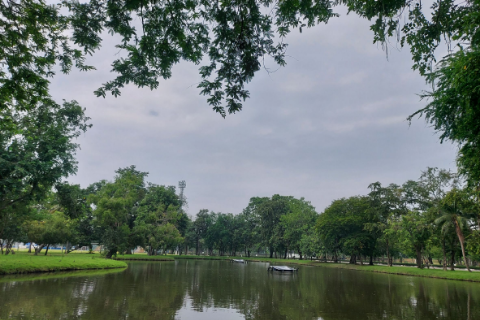

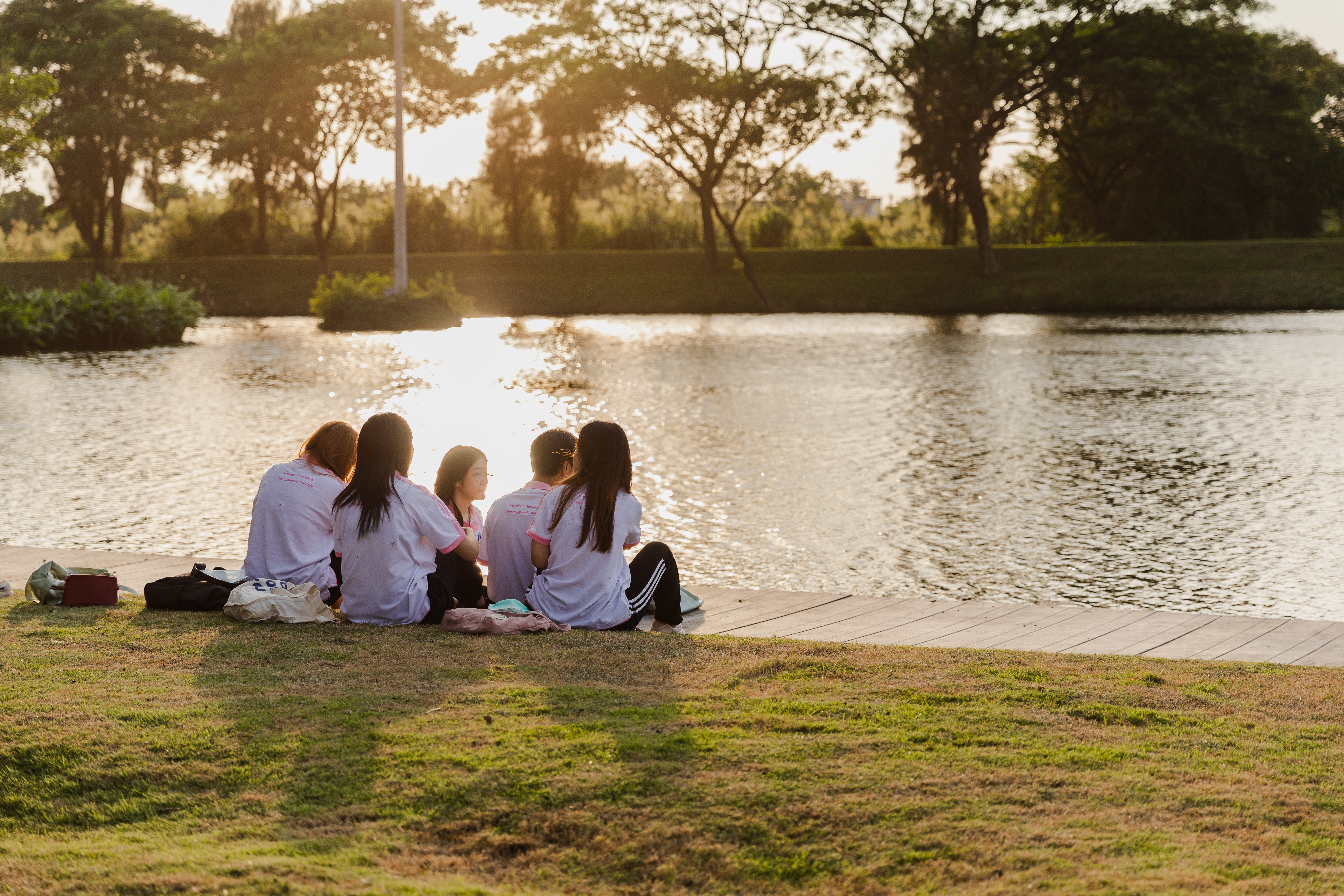
Apart from natural wetlands, Mahidol University is surrounded by freshly developed wetlands for drainage, flood prevention and wastewater treatment. Furthermore, traditional preservation and emphasis on upgrading and conserving are incorporated into the design and construction. As a result, it serves as a habitat for both plant and animal species.
There are the following of natural and developed wetlands:
- The large pond has the width ranges from 20–100 meters and the depth are approximately 3 meters. There is a drainage channel connected to the water channels around the university, such as the Sireeruckhachati Nature Learning Park Pond, pond behind Thai house, the area of pond around the museum building of the College of Music.
- The pond which is a connection to the main waterway of the university, such as the pond near the Bhumibol Sangkeet Building sign.
- The pond
- The small canal has a length of 470 meters, an average width of 10 meters and a depth of more than 2 meters to drain wastewater from surrounding buildings to the wastewater treatment system, such as the canal near the Mahidol Learning Center (Khlong Bui).
- The watercourse has a width of 10–17 meters and the dept is 2–4 meters to accommodate water, drain water into the wastewater treatment system. It is also a drainage route within the university, such as a watercourse near the Faculty of Medical Technology.
- The ditch has a width of about 2 meters and a depth of about 1 meter. It was built for the beauty of the landscape and as a drainage channel linked to the water channel and pond or treatment pond, such as the ditch in Chao Fah Park, the ditch in front of the ASEAN Institute for Health Development.

The pond behind the Thai house

The pond near the Bhumibol Sangkeet Building

The watercourse near Faculty of Medical Technology

Sireeruckhachati Nature Learning Park Pond
The ditch in Chao Fah Park

The pond beside football field
Wetland in Mahidol University on Salaya Campus is a biologically diverse ecosystem and also conducive to biodiversity and a wide variety of animal species for food and shelter, especially during bird migration such as Lesser Whistling-duck, Little Grebe, Greater Coucal, Marsh Sandpiper, Purple Swamphen, Brown-headed Gull, Purple Heron, Great White Egret and so on. Moreover, there are more than 54 types of plants were found, divided into the following categories:
- Marginal Plants are grown around the margins of the pond where the water is shallow such as Sedge, Cat-tail, Sesbania and etc.
- Emergent Plants are rooted in the lake bottom, but their leaves and stems extend out of the water such as Water Pennywort, Cape Water lily, Sacred lotus, Water lily and etc.
- Floating Plants have leaves that float on the water surface. Their roots may be attached in the substrate or floating in the water column such as Duckweed, Water hyacinth, Water Morning Glory, Floating Moss, Water fern and etc.
- Submergent Plants are rooted to the bottom but their leaves grow entirely underwater such as Fanwort, Hydrilla and etc.

In addition to the rich diversity of plant species, the wetland area also supports a wide variety of animal species. Based on site-specific ecological data obtained from surveys and monitoring of flora and fauna within and around the aquatic system, the findings reveal a high distribution and abundance of various species. This diversity reflects the quality of the water, the suitability of habitats, the connectivity of water sources, and the overall integrity of the riparian ecosystem. The species found include:
- Aquatic animals More than 15 species, such as Wallago attu (Pla Salat), Pangasianodon hypophthalmus (Pla Sawai), Dermogenys pusilla (Pla Khem Mor), Anabas testudineus (Pla Mor), Trichogaster trichopterus (Pla Kradi Mor), Channa micropeltes (Pla Chado), Channa striata (Pla Chon), and Oreochromis niloticus (Pla Nin).
- Amphibians More than 8 species, including Duttaphrynus melanostictus (Common Asian Toad), Fejervarya limnocharis (Field Frog), Hylarana erythraea (Green Paddy Frog), Microhyla butleri (Butler’s Narrow-mouthed Frog), and Polypedates leucomystax (Common Tree Frog).
- Reptiles More than 20 species, such as Indotyphlops braminus (Brahminy Blind Snake), Ptyas korros (Indo-Chinese Rat Snake), Ahaetulla prasina (Oriental Whip Snake), Gehyra mutilata (Four-clawed Gecko), Calotes versicolor (Oriental Garden Lizard), Eutropis multifasciata (Common Sun Skink), Varanus salvator (Water Monitor), and Cuora amboinensis (Malayan Box Turtle).
- Small mammals More than 7 species, including Tupaia belangeri (Northern Treeshrew), Hylopetes phayrei (Phayre’s Flying Squirrel), Callosciurus finlaysonii (Finlayson’s Squirrel), Herpestes javanicus (Javan Mongoose), and Pipistrellus tenuis (Least Pipistrelle).
- Birds More than 80 species, including Eudynamys scolopaceus (Asian Koel), Columba rupestris (Hill Pigeon), Vanellus indicus (Red-wattled Lapwing), Corvus splendens (House Crow), Dicrurus leucophaeus (Ashy Drongo), as well as several protected and rare species not typically found in urban areas, such as Netta rufina (Red-crested Pochard), Tachybaptus ruficollis (Little Grebe), Centropus sinensis (Greater Coucal), Tringa glareola (Wood Sandpiper), Porphyrio porphyrio (Purple Swamphen), Chlidonias hybrida (Whiskered Tern), Phalacrocorax niger (Little Cormorant), Ardea purpurea (Purple Heron), Ardea sumatrana (Great-billed Heron), Bubulcus ibis (Cattle Egret), Butorides striata (Striated Heron), Anastomus oscitans (Asian Openbill), Dicrurus hottentottus (Hair-crested Drongo), Ploceus hypoxanthus (Asian Golden Weaver), Halcyon smyrnensis (White-throated Kingfisher), and Oriolus chinensis (Black-naped Oriole).
- Insects Various species, such as butterflies and dragonflies.
Drawing from these ecological insights, the university has integrated the findings into its management, maintenance, restoration, and conservation of water resources. The initiatives and projects implemented within the area are designed with careful consideration of their impact on biodiversity—particularly local aquatic species. The approach emphasizes sustainable utilization of water resources, continuous monitoring of water quality, and the preservation of ecological balance through collaboration among university staff, students, and stakeholders.
This integrated management not only enhances ecosystem stability and supports native species but also contributes to the area’s value for conservation, recreation, nature-based learning, and research. The wetland serves as a living laboratory and outdoor learning site for faculties such as the Faculty of Science, the Faculty of Environment and Resource Studies, and Mahidol University International College. It provides opportunities for teaching and research in natural ecology, environmental science, botany, and zoology for undergraduate and graduate students, as well as for faculty and staff.

The university realizes the importance of the ecosystem in both wetlands. Therefore,
the University Master Plan 2008 has determined wetlands as “natural conservation
areas” for learning activities, original wetland ecosystem conservation, and to
promote related environment in the areas by prohibiting land use for other purposes,
as well as activities that affect the environmental quality of land use to support
the Sustainable Development Goals -SDGs, SDG6: Clean Water and Sanitation, SDG13:
Climate Action, and SDG15: Life on Land.

